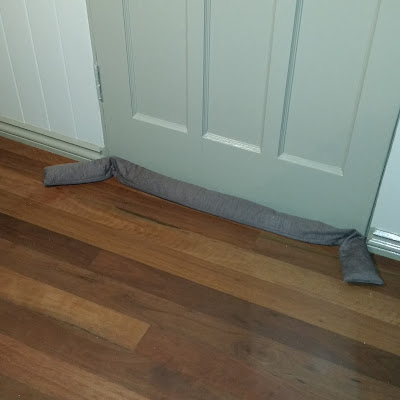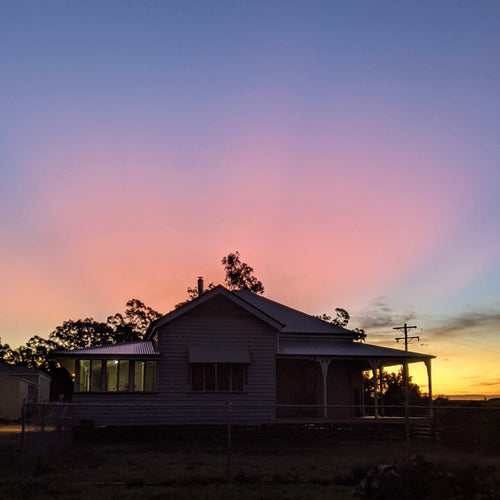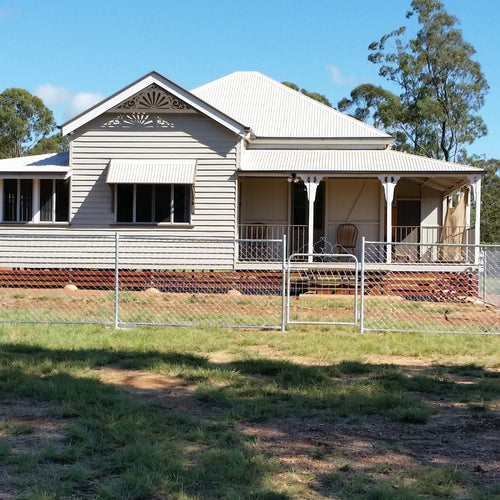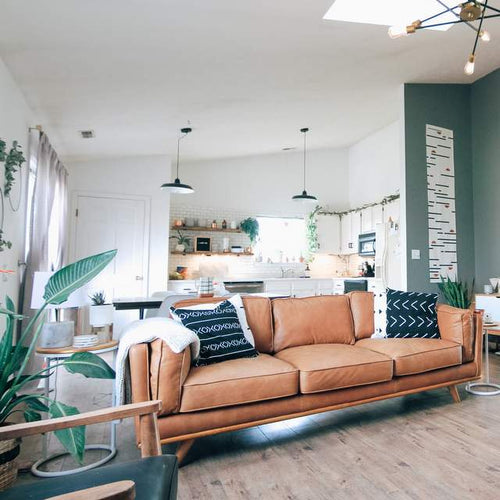Keeping the house warm in winter
There are three ways that heat is lost from a building:
- Conduction - direct transfer of heat from a warm object to a cold object, this is heat lost through the walls and roof of your house to the cooler air
- Convection - caused by a flow of cold air, either draughts or air circulating around exposed windows
- Radiation - heat transmitted in the form of light waves, this can be another source of heat loss from windows, roofs and walls of your house.
When you understand how heat is lost, you can see the solutions for keeping heat in a building.
Insulation
You can reduce the amount of heat lost be conduction by using insulation in your roof and walls. We had to install insulation in our roof as part of our building approval when we moved the house, and we also took the opportunity to put insulation in walls any time that we had the cladding off, so the bathroom and the side veranda room have insulated walls. Some of our walls are single clad - so its only one layer of VJ board between us and the cold air outside. If this becomes a problem we will put weatherboard on the outside and install insulation in between. If you don't have insulation, it is relatively cheap to buy and install yourself (be careful in your roof space!) and can make a huge difference to the comfort of your home in winter.
Reduce draughts
Queenslander homes are general draughty due to the floors, doors and windows not being completely sealed. The new floor that we installed over the existing floor has made a huge difference to draughts and the floor is now very well sealed. There is still cold air coming in around the older style doors and windows though, so I made some draught snakes (more about them later).
Curtains are also important for reducing heat loss and they break up the cold airflow around the window. If you don't have curtains, they are also relatively cheap and easy to make, or look for old ones at opportunity shops. Double-glazing of windows is another option, but it works out very expensive to retrofit.
Winter mode on ceiling fans
As hot air rises, you can find that even though you are heating a room, you're not feeling any warmer down at floor level. Most ceiling fans have a winter mode where they spin backwards and direct the warmer air from the ceiling back down to the floor.
Dress appropriately
Time to get out the ugg boots and winter woolies! Blankets and lap rugs are handy too. I find that when we are so used to a warm climate, we can forget that we do own long sleeves and pants!
The bonus is that most of these methods will also help to keep your house cool in summer. We certainly noticed the difference when we installed the insulation. The only thing you would change is to encourage breezes unless you're running air conditioning (and then you want a well-sealed house also).
How do you keep your house warm in winter? Any tips for reducing your heating costs while staying comfortable?
A secondhand house for Cheslen Rise
A tour of our secondhand house (BEFORE)
The story of our secondhand house - Part 1
Choosing insulation for our house
Renovating a Queenslander house
Building the Queenslander house - book review
Stairs for our secondhand house
Removing asbestos from our secondhand house
Another update on our house progress
How to choose exterior paint colours
And one more update on our house progress
Keeping our house warm in winter
























Leave a comment